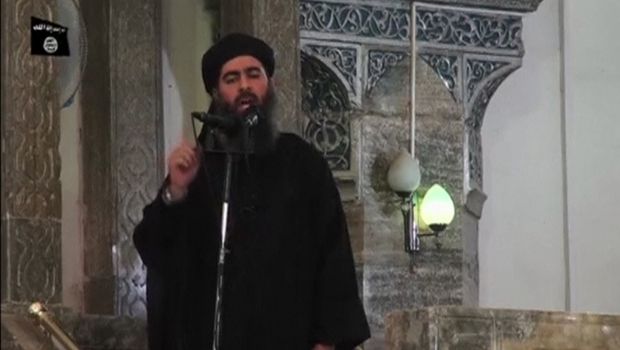Claims of a relationship between Iran and the Islamic State of Iraq and Syria (ISIS) form one of the most prominent lines of conflict and dispute in the heated strategic game currently taking place in the Arab East—one that has reached a level of crude and brutal irony in Iraq and Syria. While supporters of the Syrian and Iraqi revolutions accuse ISIS of being a product of Iran, supporters of Iraqi Prime Minister Nuri Al-Maliki and Syrian President Bashar Al-Assad insist ISIS is an instrument of the Arab states. However, the evidence of a connection between ISIS and Iran is based on a convergence of interests between both parties without the need for direct agreements or visible support. It doesn’t seem as though the controversy will disappear. Instead, the debate has moved from the political sphere to the private space of Salafist jihadists in general, and the Al-Qaeda organization specifically.
Relations between Iran and Al-Qaeda have passed through a series of transformations because of ideological differences. The US occupation of Iraq was one of the fundamental points of contention. The shift in Iranian policy coincided with a split in Al-Qaeda on its position toward Iran, and with it emerged two different trends.
First, senior leaders in Al-Qaeda, led by Osama Bin Laden and Ayman Al-Zawahiri, tried to coax Iran to take advantage of their presence in Iraq in order to confront the US occupation as a common enemy and avoid a confrontation that could have negative results for Al-Qaeda. Second, the leaders of Al-Qaeda in Iraq, led by Abu Musab Al-Zarqawi, saw Iranian interests in Iraq as no less dangerous than the US occupation.
Later, the relationship between Iran and Al-Qaeda was damaged following the Syrian revolution, and Iran and its allies became a target of Al-Qaeda in Iraq. Although the relationship between Iran and Al-Qaeda had always been tense, it deteriorated after 2011, when the two sides took opposing positions to what was happening in Syria.
Regarding Al-Qaeda’s internal dispute, a rebellious Iraqi branch of the organization revealed a sharp conflict over representation within Al-Qaeda, which prompted the rebel branch to make an announcement about the nature of its attitudes towards Iran. On May 11, 2014, in an audio message titled, “Excuse the Emir of Al-Qaeda,” the official spokesman of ISIS accused the central leadership of Al-Qaeda of deviating from their goals and having a suspicious relationship with Iran. The spokesman acknowledged that “Al-Qaeda is greatly in Iran’s debt.” He added that ISIS “did not strike in Iran at the behest of Al-Qaeda . . . so as to preserve its interests and supply lines.” What the spokesman said is not far from the truth, but this statement omitted much that explains the situation today. Iran’s aid to the Syrian government also stokes sectarian outrage, which bolsters support for extremists and leaves the moderate opposition caught between ISIS and the government.
Iran has adopted sectarian and identity policies to target the progress made in Iraq and Syria, which have today enabled ISIS to gain control over vast areas in western Iraq, particularly the provinces of Anbar, Nineveh and Salah Al-Din, as well as eastern Syria, specifically the provinces Raqqah, Deir Ezzor, and Hasakah. The sectarian policies and economic and political problems in Iraq and Syria provide an environment that is an ideal incubator for the organization. While Iran’s sectarian policies have supported Maliki and Assad on the basis of reinforcing identity, sectarian politics also represent one of the main pillars of ISIS’s ideology. Since it was established, the organization has maintained a high level of sectarian mobilization to ensure it continues to attract recruits and funding. Iran’s support of both Maliki and Assad’s sectarian policies has contributed to supplying ISIS with the enemies it needs to spread and prosper. Thus, Iranian policies have undermined peaceful, popular revolutions. Three years of ignoring legitimate grievances has generated a conviction in Iraq and Syria that sectarianism is the basis of Iranian policies—which breathes life into Al-Qaeda in Iraq, Syria, and the region as a whole.
Following the fall of Mosul, the sectarian politics of Iran and its ally Maliki emerged, along with ISIS. Yet instead of moving towards a policy based on the recognition of legitimate grievances, the two sides moved further towards sectarian policies.
It would not have been possible for ISIS to expand to the point where it has declared an “Islamic State”—whether real or not—without Iranian backing for its clients’ crude, sectarian politics. There is no doubt that ISIS propaganda and Iranian policy have bolstered one another, and ISIS now enjoys a substantial amount of human, financial, military, media, and technological power. ISIS’s agenda is based on the priority of confronting the influence and expansion of Iran in the region and in the fight against the “Safavid Project,” as it is called.
What links Iran and ISIS is the reliance of both on sectarian identity politics to spread their influence. When Iran began supporting Assad and Maliki, in doing so it also began assisting the rise of ISIS, whose existence has only leant further credence to the sectarian narratives. Thus, while there is no practical cooperation between Iran and ISIS, we can say with certainty that they are mutually reinforcing forces.
The counterpoint to this article can be read here
